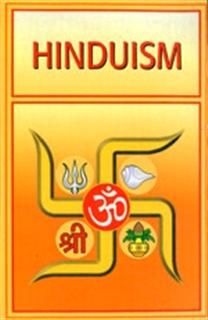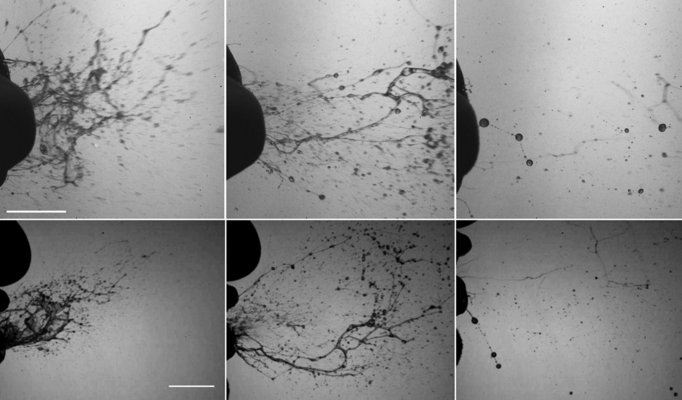
- Dr Satish K Kapoor
Hinduism has a pentagonal character:
1) It stands for a civilization as old as mankind.
2) For a mosaic of cultures shaped in different historical milieus.
3) For a way of life based on the concepts of righteousness (dharma) and cosmic order (rita).
4) For a social system with a radical framework for the conduct of human life.
5) For a wide variety of philosophic and religious schools and streams, each unique in itself and having its own raison d’etre, each spilling out nuggets of wisdom.
In a comprehensive sense, Hinduism is the embodiment of the consciousness of the inhabitants of India, the crystallisation of their philosophic speculations, ideas, beliefs, intellectual activities, aesthetic sensibilities, and socio-cultural and economic perceptions through the course of time. It encompasses the whole corpus of values which go under the name of Indian culture.
Hinduism does not have doctrinal homogeneity but it represents continuity in man’s attempts to unfold the mystery of existence. Far from being a rigid compendium of beliefs and practices, Hinduism is a quest for the timeless Reality through diverse paths leading to the same goal. It is a dynamic faith having the capacity to absorb new ideas, face challenges and revitalise itself from time to time. Hinduism is like a gigantic tree of heritage value. Its leaves have withered and fallen off and fresh leaves sprung up again, but its root and the trunk, with ever proliferating branches, have existed all through.
Hinduism has no historical founder, because a tradition cannot be founded. It has evolved through the course of time and, in the process, thrown up prophets, mystics, gurus, philosophers, social reformers, juristsn and others to guide the people and to set their goals and priorities in a given milieu. It does not believe in a single revelation or in a divine plenipotentiary as an intermediary between God and man for all times, since it holds that the Supreme Reality can reveal Itself to any number of people.
Hinduism holds that religion is a journey within one’s being —each can have, within himself, the experience of the revelation of the Reality, each can be a prophet. God cannot be patented or monopolised. Each mind can be awakened to the glory of the Supreme Being. Each soul can be illumined. Hinduism does not circumscribe God to one place, direction, body or configuration, since He pervades all.
The diversity of Hindu traditions and lineages caters to persons of different religious and moral orientations. The Hindu is completely free to choose the object of his veneration according to his natural inclination or temperament. The three-hundred and thirty-million gods and goddesses of the popular Hindu pantheon are symbolic of the multiple aspects, attributes or functions of the Supreme Being.
Hinduism has its periods of light and shade, occurring concurrently, or at irregular intervals, through the course of history. Sometime shady aspects assumed vast proportions and enveloped the lofty ideals of the Vedas, the source of primeval knowledge, but prophetic souls appeared to redeem society of evil, from Adi Shankarācārya to Bhakti reformers of medieval India, from Rājā Rām Mohan Roy, Swāmī Dayānanda and Swāmī Vivekānanda of 19th century to Mahātmā Gāndhī. There have been periods of twilight, no doubt, but never was light totally eclipsed from view.
The evolution of Hinduism has been a saga of continuous progression from the unreal to the real, from the profane to the profound, in successive stages of human development. Hinduism withstood challenges of all hues both within and without, keeping pace with time. Confronted by militant Islam in the beginning and proselytizing Christianity in the latter part of the second millennium, Hinduism initially withdrew in its shell, tightening its hold over its flock, ideas and institutions, but overcame its trepidation and inhibitions in each case and asserted itself through self reform, resuscitation of spiritual values, and restoration of social ideals.
Hinduism has its philosophical and practical sides – ‘the kernel and the husk’. The survival of Hinduism has been due to its ability to separate the former from the latter, in an unending process, and to withstand challenges of all types and hues by adhering to the timeless principles of truth (satya) and righteousness (dharma). Hinduism has been open, flexible and adaptable. It has discarded outworn ideas and institutions, absorbed the best elements of fellow cultures and reinterpreted itself in changing milieus.
Hinduism has been undergoing a gradual process of reorientation in view of the emerging global challenges in different spheres of human life. The globalization has been facilitated by orientalists, travelers, preachers, diaspora, convergence of communication technologies and social networking platforms.
Hinduism as a way, view, vision and outlook of life has influenced the thought and life-patterns of people in many parts of the world. Hindu ideas can provide the praxis of a new world order which is structured not at the mundane level of the mind but in human consciousness.
To adopt truth as a value of life, to adhere to the eternal order (ṛta) and abide by the laws of the universe (samatva), to respect Mother nature, to be in concord with living beings (sarvāni bhutāni), to stay whole in mind, body and spirit and to live in blazing consciousness of one’s spiritual nature, are age-old ideas in the Hindu sacred texts which can be crystallized for the efflorescence of man and his fulfillment.
The Hindu concepts of purṇa – the whole to which nothing can be added, and śunya – the void from which nothing can be extracted, have brought physicists closer to the holistic and dynamic conception of the universe as provided in the Vedas and other sacred texts.
The fundamental unity in the cosmos between matter, mind and consciousness – crux of Vedānta philosophy – has been appreciated by scientists in various areas like quantum mechanics, relativity, particle physics, astrophysics, neurology, neurophysiology and molecular biology. The Advaitic insights that there is one unchanging reality; that consciousness is the substratum of matter, mind, and all else that exists; that the microcosm contains in it have provided a new vision to scientists like Niels Henrik David Bohr, Werner Heisenberg, Richard Phillips Feyneman, Eugene Wigner, among others.
Erwin Schrodinger saw the boundary line between physics and metaphysics fading out after going through the Upanishads, the Bhagavadgītā and other sacred texts. He conceived consciousness in the singular and saw the plurality of phenomena as mere appearance, as in the Hindu concept of māyā.
While a number of scientists have acknowledged their debt to Vedānta, Sāmkhya and other philosophical schools, a few have remodeled traditional ideas into western idiom claiming them as their own.
Modern medical science can benefit from traditional medical recipes and therapies of Ᾱyurveda, from treatises on plants and trees, from the five-fold purification therapy( panchakarma),and from the principles of health enunciated in the ancient compendia of Caraka, Sushruta and Vāgabhatta relating to food, sleep, sex, hygiene, exercise and mental health.
The Vedic way of farming, involving the rite of agnihotra –burning of specific organic substances into fire along with the chanting of sacred syllables – is becoming popular in America, Germany, Poland and other countries. Traditional methods of agriculture, pest control, crop management, plant nutrition, plant propagation and seed collection as mentioned in Sanskrit works like Krishi sukti of Kashyapa, Krishi Prasāra of Prashara, Upavana-vinoda of Shārangadhar, Vrikshāyurveda of Surapala etc., can be fruitfully added to or can replace to an extent, some of the modern agricultural practices which raise input but decrease quality, poison soil, or are harmful in other ways.
Vegetarianism, a key Hindu concept, is gaining votaries among scientists some of whom are considering the compulsory observance of Vegetarian Day by all, as part of the battle against global warming.
The holistic vision of life provided by ancient sages, which lays equal emphasis on material progress and spiritual perfection, on science and spirituality, on the development of the heart and the mind, continues to be relevant. The Hindu wisdom that the root of happiness lies in righteous actions (sukhasya mulam dharmam) and the root of dharma is the legitimately earned wealth (dharmasya mulam artham), still holds good in a materialistic world.
——————————————————————————————————————————
Excerpted from Dr Satish K Kapoor ‘latest book , Hinduism : The Faith Eternal (Advaita Ashrama, Kolkata, India).
—————————————————————–
Infinityami50@gmail.com


 South Asian News E-Paper
South Asian News E-Paper Punjabi News E-Paper
Punjabi News E-Paper

















